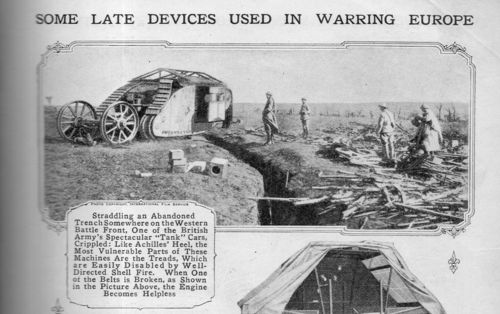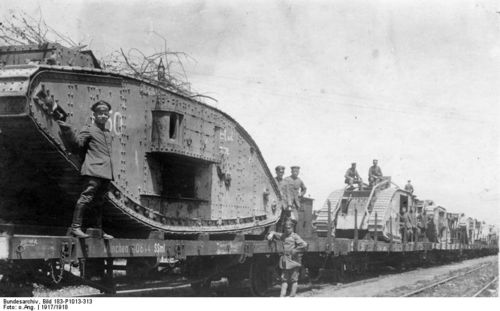JF Ptak Science Books Post 2623
I wasn't looking for this--or anything else in particular--while browsing the year 1917 in Popular Mechanics, though when I came across it and noticed that tank was in parenthesis, it occurred to me that there was good reason for that. The "tank" was brand new on the battlefield when this issue of the magazine came out in May, 1917. The tank had made its first showing just weeks earlier in April, and had really only just come into its abbreviated name. The committee formed in February 1915 to spearhead the development of a new armored fighting vehicle was called the Landships Committee, and as one story goes, the vehicle was called a "tank" because of its resemblance to a water tank--also, it was intended to misdirect any information going the wrong way by not referring to it as a "landship", which would give away some of the secrecy. It should be noted too that it was the First Lord of the Admiralty, Winston Churchill, who established the committee. So what we see here on page 683 of the May 1917 issue of Popular Mechanics is a very early photograph of the tank in a mass distribution magazine.
The tank hit the battlefield pretty hard, and it evidently took the Germans by surprise--they certainly captured many more tanks than they produced, by far. During the war, from 1916-18, Germany produced only 20 tanks. In that same period, the U.S. produced 84, while the French constructed nearly 5,000 and Great Britain 3,800 or so. Germany was completely unprepared for heavy armored mobile combat--that would be a completely different story by 1939.
I've attached a photo of German soldiers with captured British tanks being hauled away on railroad flatbeds--no doubt these were photographic postcards. Seems to me highly plausible that Germany would employ more captured British tanks on the battlefield than they would German-made tanks.





Comments